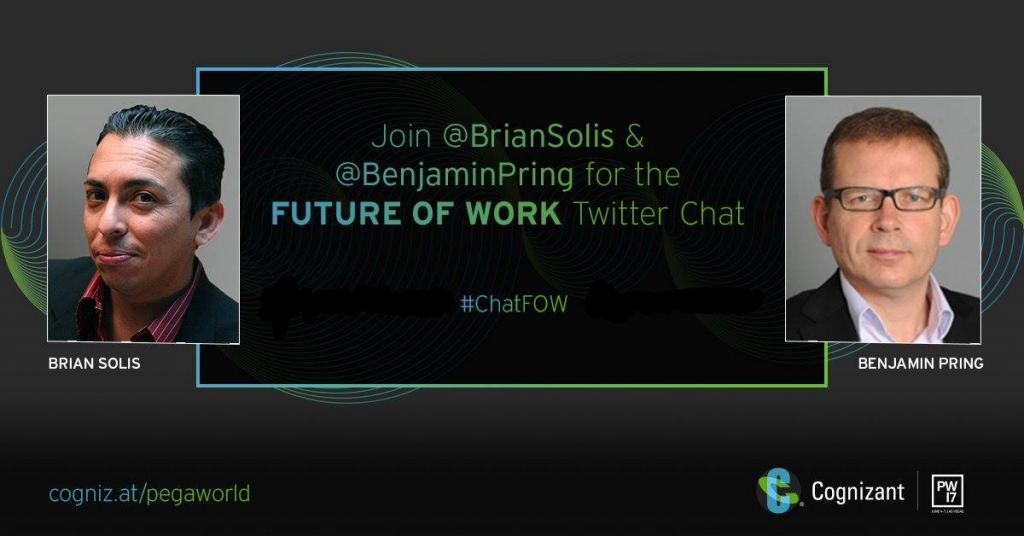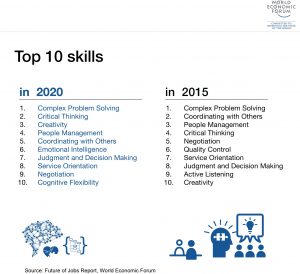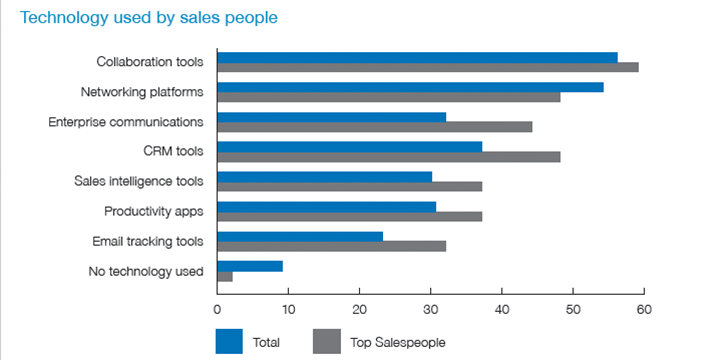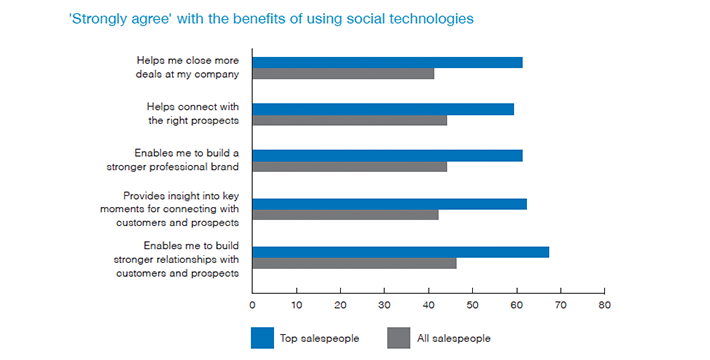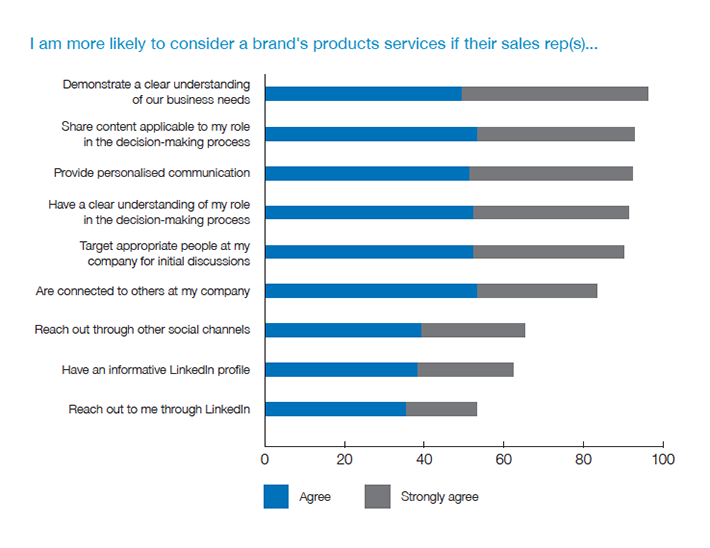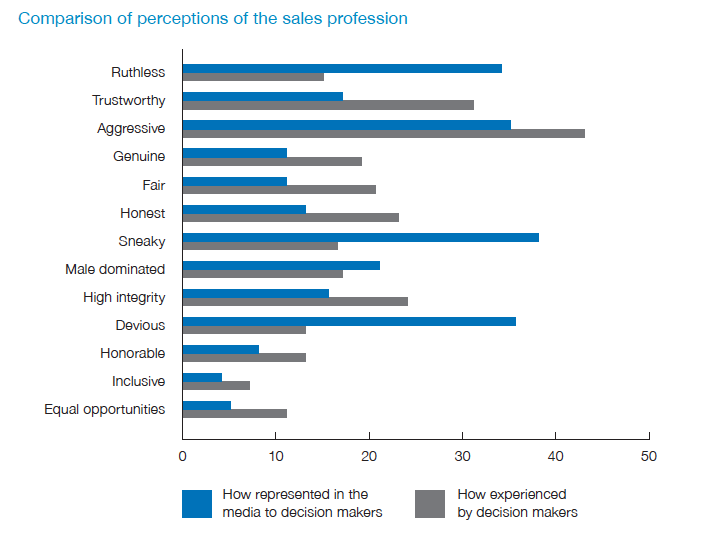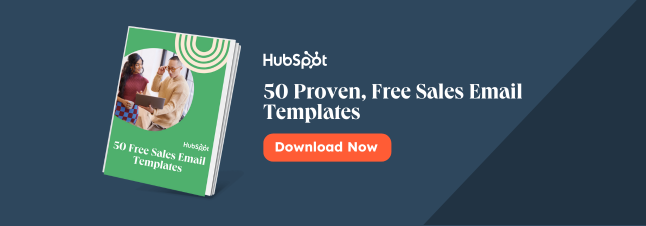Transcript of The Power of Little Ideas written by John Jantsch read more at Duct Tape Marketing
Back to Podcast
Transcript
John Jantsch: “Innovate or die.” That’s what Peter Drucker said and I think a lot of people took that to mean that you had to create a company that disrupted an entire industry and you should be looking for ways to innovate on your products and services like nobody ever thought about, but I really think it was misunderstood. I think in a lot of ways what Drucker was talking about was a value that said you have to innovate like you have to be trustworthy.
That innovation has to be built into the core of how you serve your customers. It’s like this constant optimization is innovation as opposed to great giant disruption. On this episode of The Duct Tape Marketing Podcast I visit with Dave Robertson. He is the author of The Power of Little Ideas, A Low Risk, High Reward Approach to Innovation. Guess what we’re going to talk about on this show?
Hello and welcome to another episode of The Duct Tape Marketing Podcast. This is John Jantsch and my guest today is Dave Robertson. He is on the faculty at the MIT Sloan School of Management and also the coauthor of a book we’re going to talk about today, The Power of Little Ideas: A Low Risk, High Reward Approach to Innovation, so Dave, thanks for joining me.
Dave Robertson: Thanks for having me, Rob. John, sorry, John.
John Jantsch: That’s all right. We’ll keep that in there too. We’re not going to edit that out, that was too good. Let me ask you a quick question, and this may sound like a silly question, but bear with me on it. How would you actually describe what innovation is? I think there’s so many people that are told you have to innovate. Innovation is such a great thing. I think a lot of people then kind of go, “Okay, but what is it? How do I do it? It’s hard.”
Dave Robertson: Yeah, so I think that is a really important question. In fact, I start out my class on innovation with exactly that question because I think the way you define innovation affects how you manage, where you look for it, what you ask for, what kind of innovation you get. I think too often we see definitions of innovation that are those insanely great new products that change markets, disrupt the fortunes of companies, revolutionize industries, that kind of thing.
That’s important, right? That kind of innovation matters, but it’s pretty rare and I think an improvement, a new way, the definition I like is a new match between a solution and a need. It doesn’t have to be a new solution and it doesn’t have to be a new need, but if you can somehow bring together things in a different way, combine things in a different way, I think that counts as innovation.
John Jantsch: Yeah, and I wonder sometimes if people that are truly innovative are just being strategic as well. You have a case study in the book of Apple and I think everybody thinks of them as the greatest, or at least Steve Jobs’ contribution as the greatest innovator in the world. When I read your case study it just feels like he was being strategic.
Dave Robertson: Well, and I would argue that it’s less strategic than it may appear. Everybody talks about iTunes as this amazing, huge, innovative leap forward, but the fact is iTunes for its first two years was an MP3 management system that he bought from, he purchased an existing company that was competing in a market with other competitors out there to do MP3 management.
John Jantsch: Another element of this idea of innovation, I’m a big Peter Drucker fan and he’s, I think he’s attributed with saying something like innovate or die in one of his books. I think that gets kind of misunderstood a lot of times. I wonder if he was talking about the idea of innovation being of value as opposed to disruption. That it’s like be trustworthy or die. What’s your thinking on that?
Dave Robertson: Yeah, right. If you don’t innovate then you become a commodity. I completely agree.
John Jantsch: You outline in the book another way, what you call the power of little ideas is really a sort of a systematic way of looking at innovation not as being this big disruptive thing or even this incremental thing, but just as almost like a process I guess. You want to kind of map out your I think it’s three stages or three kind of core components and then we can break each of them down a little?
Dave Robertson: Yeah, so the fundamental idea is that we often talk about innovation in terms of using new technologies, right? So everybody uses that example of digital photography is disrupting the industry and putting Kodak out of business. That was of course nothing new in terms of we’ve been taking pictures for a century, but it was a very new way of doing it. Of course that counts as innovation, right?
So you can innovate in that direction. You can also innovate in terms of the finding new needs. Sometimes this is called Blue Ocean Strategy, those latent, unmet needs. I think of the Egg McMuffin as the opposite of the digital camera. The Egg McMuffin was the first fast food breakfast at scale. It was basically making a sandwich, which McDonald’s knows how to do, and wrapping it up and putting it in a warming tray and serving it to people in a fast food environment.
Well, there was nothing new about the technology for that. Every step in the process was something that McDonald’s knew quite well, but fast food breakfast was an unmet need and it turned out to be a very powerful need. Of course, you can get that 24 hours a day now. That’s kind of another way you can innovate, but a third direction to innovate is kind of around your product. So think of it as not just a two by two matrix, but a two by two by two.
Maybe that’s my big contribution to management thinking is going away from the two by two matrix and making something more like a hologram. In my previous book about Lego I talked about how they went away from the brick and tried to do all kinds of disruptive and new play experiences, disruptive technologies and new play experiences, and that almost put them out of business. When they went back to the brick and then started surrounding that with games and stories and events at the Lego Store and other things like that, that people returned to the brick.
When I looked around for other examples like that I started seeing them everywhere, of companies that weren’t so much innovating in the product as innovating around the product and by doing so really helping their customers get more value from the product. That’s the point of the book is thinking about what is the value of your product and more broadly, what is the customer trying to do with your products. Then the third step is how do you actually help that customer get value from your product? What are the other complimentary innovations that will make your product more compelling, more valuable, more useful to your customers? Then bringing them all to market.
John Jantsch: Yeah, so a lot of companies sit around in boardrooms and innovate, right? I think what you’re suggesting is in a lot of ways paying just hyper, hyper attention to the customer is probably where the innovation lives.
Dave Robertson: That’s right, yeah. Yeah, but it’s paying attention to the customer in a different way, right?
John Jantsch: Yeah.
Dave Robertson: It’s not going out and saying … One of the stories I use in the book is GoPro, which I think is a wonderful case study of innovation because of the number of different ways they’ve innovated or not. We can talk about that, but Sony came after GoPro once it started seeing this five years of 90% annual sales growth between 2010 and 2015. Sony came after GoPro and what they did is they talked to the customer very carefully and said, “What do you want from a waterproof action camera?”
They came out with a better camera than GoPro’s, but GoPro was innovating not just in the camera itself, but also around the camera, so they have mounts, they have desktop software, they have a smartphone app, they have a wonderful social media site, all kinds of different things that helped their customers not just shoot raw footage of adventures outside, but also turn those into very compelling music videos and post those for their friends.
Sony listened to the customer. They commissioned a team to develop a better product. They developed a product that had more pixels, it had noise reduction, it had image stabilization and it was a third cheaper than GoPro’s and they got killed in the market because they weren’t innovating around the product. That was the terms of competition in their industry.
John Jantsch: Hey, thanks for listening to the Duct Tape Marketing Podcast. If you like this one you might also like my other podcast, The Consulting Spark where I interview independent marketing consultants and agency owners. We talk about how they built their business and the struggles they face and what they love about being in this business, so you can check it out at DuctTapeMarketingConsultant.com.
What about, and I’m not sure if this is what you’re really getting at is those companies that they innovate around their product, but what if you’re in an industry where your product is maybe going away even though it’s a cash cow today? The example I love to use is newspapers. Classified advertising in newspapers was a cash cow and they wouldn’t innovate around it because it meant killing the cash cow.
Dave Robertson: Yeah, and that’s something that I really find disappointing about the innovation literature is that there’s too many authors that say there’s one best way to innovate. There’s the blue ocean people who say everything is about blue ocean and you’ve got to find blue oceans. For your listeners who aren’t familiar with that, the blue ocean metaphor is red oceans are red because there’s so much competition that there’s blood in the water. There’s sharks circling and they’re attacking each other.
What you have to find is that unmet need, that latent need, which only you fill and so you’re sailing in blue oceans. Well, GoPro actually started out as a blue ocean company. It was started out by a surfer who figured out how to waterproof his camera and strap it on the front of his surfboard and so it really was a blue ocean type of innovation.
John Jantsch: Literally, right.
Dave Robertson: Yeah, right. Then later of course he figured out it wasn’t enough to just have a waterproof rugged action camera, that he had to create more mounts, so now you can mount it on your surfboard or your bicycle or your helmet or your chest or my favorite, your dog. They do, they sell a dog mount.
John Jantsch: Yeah, yeah, yeah. There’s some great videos of the dog running around the house and eating and stuff.
Dave Robertson: When you’re not there, yeah.
John Jantsch: It’s strangely entertaining.
Dave Robertson: Yeah. Then also of course the desktop software, the smartphone app, the social media site, all that stuff and that’s how they held off the competition from Sony and other players. Now as smartphones are getting more and more rugged and waterproof, they’re getting disrupted. GoPro is getting disrupted.
You look at since 2015, they had a pricing mistake and they built a drone that tended to fly off or crash and they made some other mistakes, but still, the smartphone’s getting a lot more rugged and waterproof. They have phones you can drop in water and you don’t have to worry about it.
John Jantsch: And the camera’s getting better. Yeah, and the camera’s getting better.
Dave Robertson: And the cameras are getting better and the memory’s getting larger so you can capture more video on your smartphone. So they’re getting disrupted and I think this comes back to you, if you’re going to be an innovation leader you have to have a full tool belt, right? You’ve got to have not just a hammer, like a blue ocean strategy hammer, but you’ve also got to have disruptive innovation. How do you respond to disruption? That’s what GoPro is struggling with now, but also they’ve got a couple more years of 90% growth because they’re really good at this third way innovation that I talk about in the book.
John Jantsch: Yeah. I think the tough thing for a lot of companies, especially when you talk about this disruptive space is that sometimes even if they see the writing on the wall, it means gutting something that is currently making a lot of money. A lot of times, right? That was I think why Kodak was so slow to get into digital, because it meant throwing out the business that was making them billions of dollars.
Dave Robertson: Yeah, and I think Christianson and his colleagues have captured that very well, that what happens with disruptive innovation is that you get those, your best customers aren’t the ones being disrupted. Your highest margin business isn’t suffering.
John Jantsch: That’s right.
Dave Robertson: It’s that low end stuff that you see being disrupted and so you just, you say, “Fine, take it,” but then the technology, it matures very rapidly and before you know it you’re three development cycles behind and they’re taking over the main part of your market and you find yourself late to the party and you’re out of business before you know it.
He’s captured that very well. I don’t think it happens that often though. Give me three examples that don’t include GoPro or Hard Disks or … There’s three or four examples that are used all the time. Outside of those you just don’t hear a lot.
John Jantsch: Yeah. Well, I think a lot of people cite some of the sharing economy stuff as disrupting some industries, rental industries and car industries and taxis and things, but again, I agree, we tend to focus on those ones that are really big and everybody talks about. Let me ask you this. Your kind of third way theory does hinge very much, or at least the first step is what is our key product? Could you apply the same thinking or point of view to a let’s say a consulting company that doesn’t really view what they do as a product?
Dave Robertson: Oh sure, right. Because I think whether you’re a product company or a service company, sometimes the reason that customers do or don’t hire you has not much to do with the product or service itself, that central thing that you’re selling, but things around it. Maybe you’re just hard to do business with or maybe once you leave it’s difficult to get value from that.
I think you John, you have a podcast that a lot of people listen to and value, but I was checking out your website and you do a lot of things around that to …
John Jantsch: Oh absolutely.
Dave Robertson: … help people get value from the ideas that you talk about in your podcast. You’re kind of a third way guy yourself.
John Jantsch: Well, thank you for saying that because I’ve always felt that that’s what I think most small businesses need to do is they have to have these kind of convergent streams of income that depend on each other. I speak, I write books and those things actually help each other. I think that that in a lot of ways you could look at as a family of products that are kind of serving the same need.
That approach I think is something that pretty much any small business should be looking at. If I sell a $10,000 product, what’s the $100,000 product that maybe 10 or 15% of my customers would buy? I’ve always kind of had that point of view.
Dave Robertson: Right, but so say you or any consultant work with a company. After you leave it’s helpful to have maybe it’s a followup thing, so it’s not an intensive consulting engagement, but it’s maybe a weekly phone call and it’s sending along some articles and it’s, “Hey, have you thought about listening to this podcast that I did a year ago? What this person is saying is directly relevant to the challenges you’re facing right now.”
And, and, and, and, and, right? There’s a lot of things around a core product or service that can really add a lot of value to that and can differentiate you enough that people are willing to pay more for that core product or service versus somebody else’s who’s pretty similar.
John Jantsch: A related question, and again, I don’t know if you have data on this. This may just end up being an opinion, but a lot of times people feel this pressure to change stuff, to innovate and maybe they don’t need to. Maybe what they’ve got going is working, is working well and sort of the drive to innovate is more around being bored than with what they’re doing than anything else. Is there a time when innovation or at least looking for innovations can be harmful?
Dave Robertson: Well, so my whole approach to innovation is the first step should almost be where do you not want to innovate? I think every company that’s grown to any significant size, even small companies, they have a set of customers that want what they’re selling, right? That bought from them yesterday, that are going to buy from them today, that are going to want to buy from them tomorrow.
Of course, if innovation is defined broadly, that continuous improvement of the product, adding a feature here, cutting the cost there, that always should happen, but I think an important first question to ask is where are you not going to innovate? What are those things that you did yesterday that you’re going to do today, that you’re going to do tomorrow that your customers value? Then starting to understand well, what else? What are they trying to do with that product or service?
Then figuring out how to innovate around it. I think that’s always useful, but I did an analysis. One of the things I’ve done, this is a very unscientific study. I assigned to my MBAs and executive MBAs a paper, so I’ve got hundreds of these papers over the past couple of years and I say, “Compare two companies, one of which has won and one of which has lost in a particular industry or market.” It wouldn’t be Sony for example, but it would be action cameras, and a lot of people did the Sony versus GoPro and the action camera market.
I tend to get a lot of the same examples. In fact, I’ve said, “You can’t do Uber. You can’t do Facebook. You can’t do Airbnb, all the ones that you hear about again and again, because you’re not going to learn much. Please don’t put me through reading another one of those case studies.” I ask for interesting examples of one company who has out-innovated another. Then what I try and do is categorize them.
How did the winning company innovate? The most frequent reason for one company winning against another is they just developed a better product consistently over time. I just read a really wonderful one about women’s razors. Bic was the first one to offer a razor for women, and of course shaving your legs and armpits and so forth is a different type of shaving than shaving your face. Bic realized that and came out with a product, but then Gillette just out-innovated them.
They offer complimentary products, but it really is about just one product being consistently better than the other. That’s the most frequent reason why one company wins against another is that they just develop a better product. Then the second most common is blue ocean, that a company finds an unmet need and gets to that market first and wins in that market because they discovered it, they understood the unmet need and they satisfied that need.
Then a pretty close third is this third way that I talk about of innovating around an existing product. It’s not incompatible with making a better … GoPro has been making a better camera consistently over the years, but the reason they beat Sony is because they were innovating around that product, not because their product was better. Then a distant, distant fourth is disruption. There’s just not that many examples of it.
John Jantsch: Tell me where you think this fits in. I know a lot of companies, particularly established companies and heaven forbid, public companies that have to make decisions for reasons other than innovation, how do they address the fact that sometimes what happens is the buyer behavior changes dramatically?
An example I love to use all the time is I’ve been with this what I would call kind of this old, stodgy bank for many, many years and I like them because they’re personal. They know my name. They’re small. My kids wouldn’t bank there if you paid them because they don’t have all the bells and whistles and branches and technology that can deposit your check without actually going to the bank. How does a company that’s established in a market with a certain buyer behavior that is tailored to that market adjust to the fact that the next generation’s buying behavior is different?
Dave Robertson: Good question. Yeah, so I think things like that do change and again, I think you’ve got to innovate to meet the needs of that new market segment. Sometimes, of course sometimes that means making a different product. Other times it just means surrounding that product with compliments.
For banking for example, I think you can still have branches on every street corner and you can have ATMs all over the place and you can have personalized service for old farts like you and me, but then maybe you also need that smartphone app so that your kids can bank the way that they want to bank.
John Jantsch: Yeah. I think that the key there is recognizing that you’re missing out on that opportunity I suppose. That’s probably where some real disruption has happened, where somebody’s come in and said, “Hey, here’s how 30-year-olds want to buy,” and they build a company around that and sort of grab that space where maybe it wasn’t even a new product. It was the way the product was delivered, if you will.
Dave Robertson: Yeah, and I think that that part of disruption is underestimated and completely misdiagnosed in the popular literature. So I have a whole chapter about Apple and Lego, about how they’re very similar in the sense that they’ve ended up being quite disruptive by accident. That Apple, when it came out with iTunes and the iPod in 2001, they were not trying to disrupt the music industry and anybody who doubts that, just go back and read Isaacson’s biography of Steve Jobs.
What he was trying to do was compliment the Mac. He was trying to sell more Macs and he fought like crazy the push to put iTunes on the IBM platform because again, he wasn’t trying to disrupt the music industry. He was trying to help people use the Mac in a more powerful, useful, compelling way. One of those ways was help you manage your digital life was the way he put it, in particular, digital music. So he meant the iTunes and the iPod as compliments to the Mac for the Mac platform and really resisted sending it out.
But of course, then iPod and iTunes became the iTunes Store and then they put iTunes on a phone and then it became the iPhone and now they get more money from the small screen than they do from the big screen. Similarly, Lego, Lego never meant to be a force in movies, but they’ve got of course two movies coming out this year, the Lego Batman Movie and the Lego Ninjago Movie.
Those are big properties for them. All of a sudden Disney might be looking over its shoulder at Lego as a storytelling company with toys that help kids play out the story and theme parks. I don’t know if you’ve noticed but there’s lots of these little Lego Discovery Centers that are popping up in …
John Jantsch: [crosstalk 00:25:37].
Dave Robertson: … second tier mall space all over the country.
John Jantsch: Yup, yup. Yeah, we have one in Kansas City, so I am familiar with it. Dave, where can people find out more about you and your work and obviously purchase The Power of Little Ideas?
Dave Robertson: Yeah, so I’m redoing my website right now, but there’s something about the book at Innonavi, that’s I-N-N-O-N-A-V-I.com. Of course the book, The Power of Little Ideas is available at your favorite bookseller online or offline. Then I have my own podcast, Innovation Navigation that they can listen to and I talk about this, but also other things.
I’ve got a disruptive innovator on the podcast, a guy who used technology to design forks and spoons for people with hand tremors. Fascinating story and a great example of disruptive innovation, but again, it’s one of the rare examples I could find.
John Jantsch: You know it’s funny, I bet you could write an entire book, probably somebody has already, just about some of these disruptive innovations that were created because somebody just went, “How come I can’t get a blah, blah, blah, anywhere?”
Dave Robertson: Mm-hmm (affirmative). Yup.
John Jantsch: They said, “Well, I’ll just make one by gosh,” and then it became a company. Well Dave, thanks so much for joining us. I appreciate this really fun stuff to talk about. I encourage listeners, go check out The Power of Little Ideas.
Dave Robertson: Thanks John, it’s been a pleasure.
John Jantsch: Hey, thanks for listening to this episode of The Duct Tape Marketing Podcast. I wonder if you could do me a favor. Could you leave an honest review on iTunes? Your ratings and reviews really help and I promise, I read each and every one. Thanks.






















